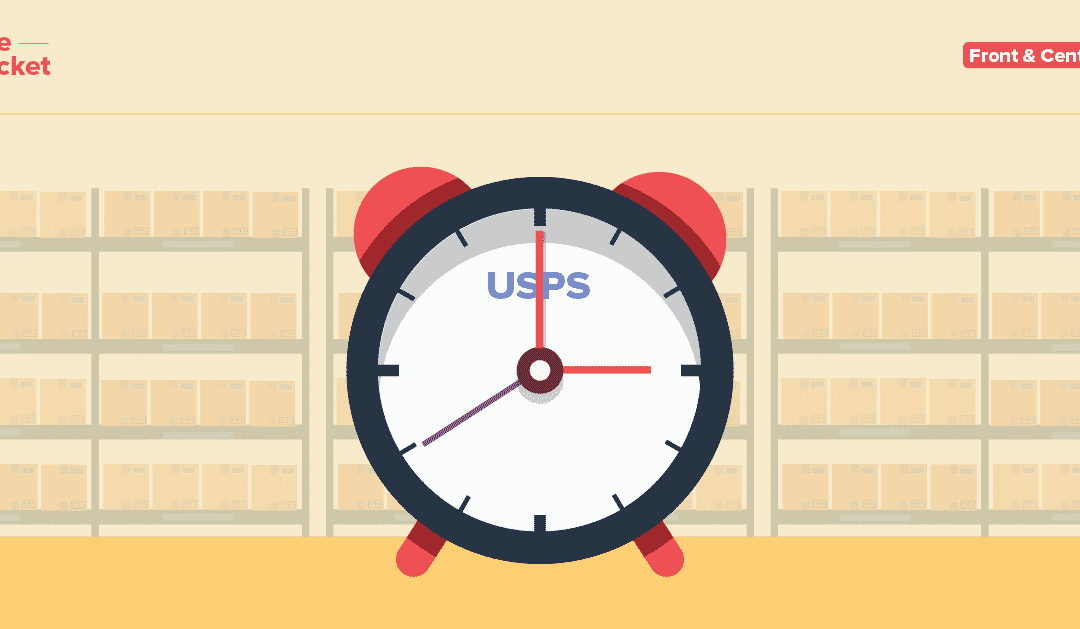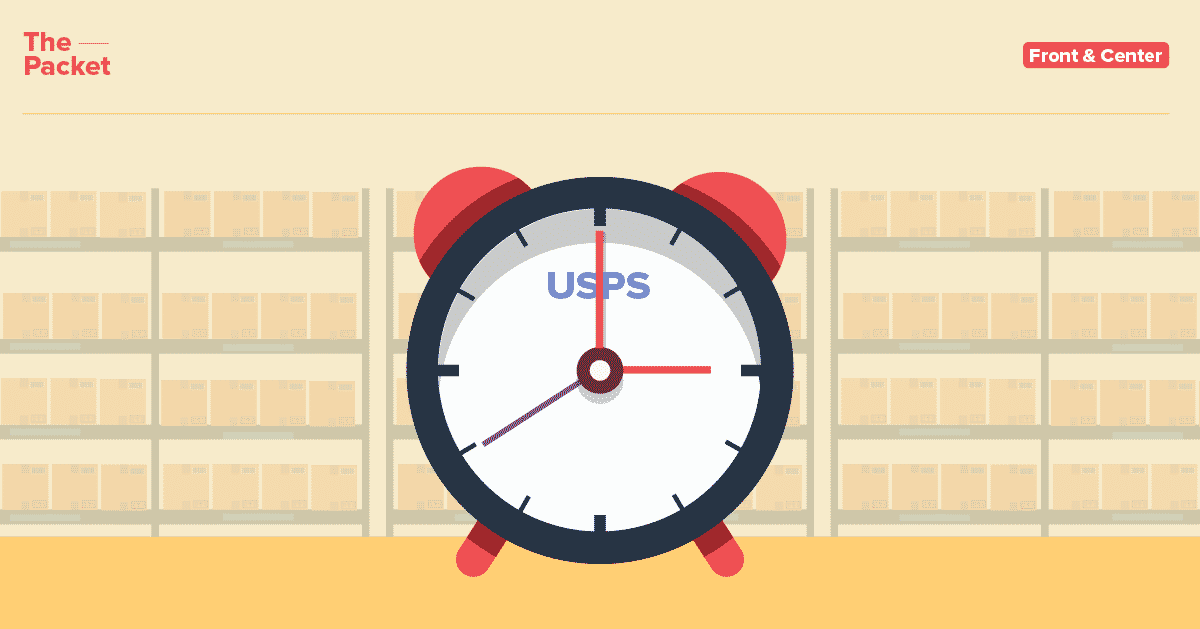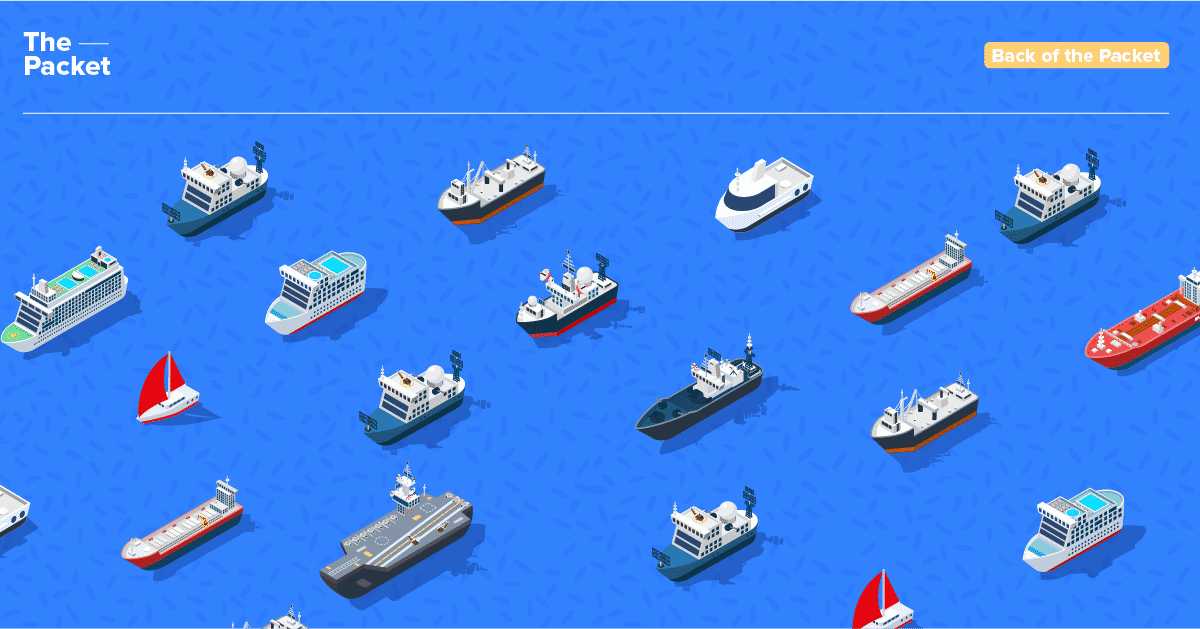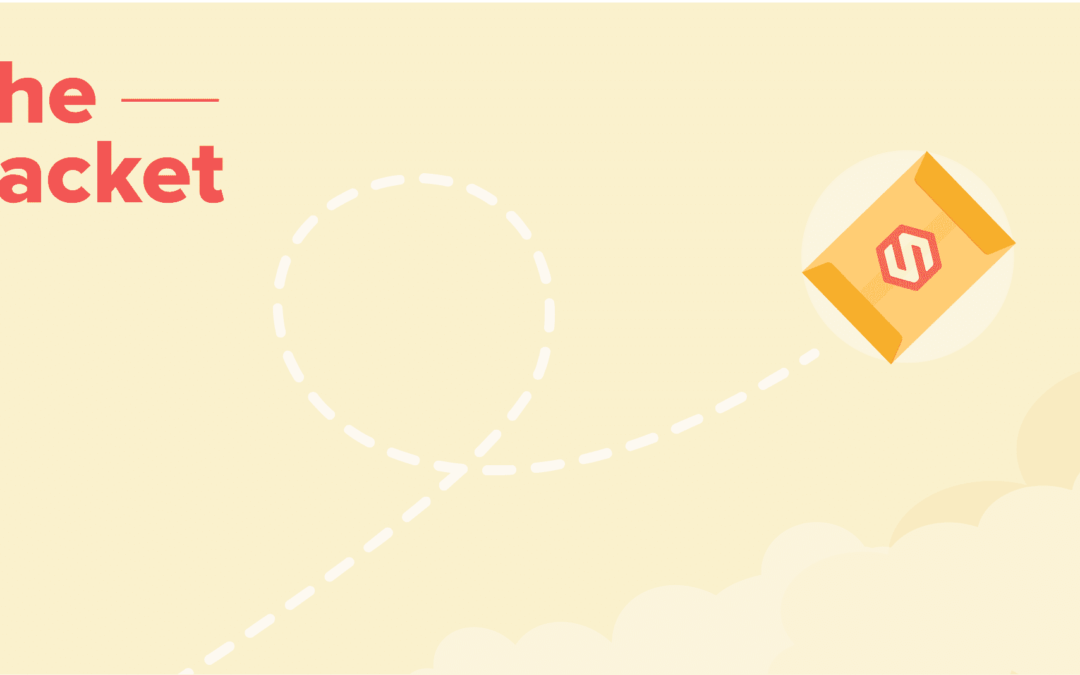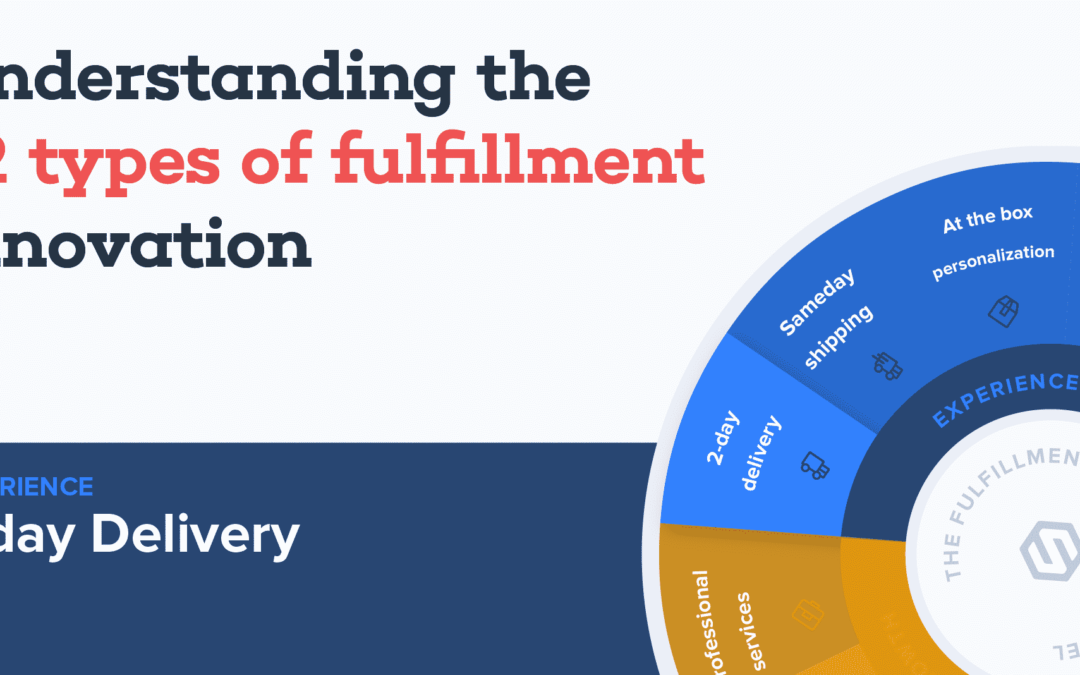
Mar 29, 2021 | Blog, The Fulfillment Innovation Wheel
ShipHero recently launched The Fulfillment Innovation Wheel to help 3PLs understand what capabilities and service offerings they need to implement in order to be successful and to help online retailers and brands choose which 3PL is right for them by allowing them to ‘check the boxes’.
The Fulfillment Innovation Wheel listed a set of twelve (12) capabilities that fulfillment providers and logistics companies should implement to continually delight their customers and push themselves towards greater success and innovation.
The twelve capabilities are:
- 2-Day Delivery
- Same Day Shipping
- At the Box Personalization
- Designed for Returns
- Sustainable Fulfillment
- Resilient Shipping
- Distributed Fulfillment
- Data Now
- Automation
- Scale Up and Out
- Integration Stack
- Professional Services
In this article, we will be diving into Capability #1: 2-Day delivery.
And be sure to stay tuned for future articles as we deep-dive into each capability.
Capability #1: 2-Day Delivery
Staying competitive in today’s eCommerce landscape is easy! From the moment when the customer clicks ‘Order’, you just need to be prepared to cover potentially hundreds of miles to deliver your products to their doorstep … in under 48 hours. Tick-tock!
2-day delivery has become the standard in eCommerce delivery, with major retailers like Amazon, Walmart, Target, and just about any business that wants to stay competitive all offering next-day delivery.
While the concept is simple, implementing 2-day delivery for your far-reaching customer base can be a huge undertaking. Not to mention, failing to meet this promise could result in irreparable damage to your credibility and brand.
So how can your business offer 2-day shipping? And what about sustainability?
Against the wishes of many environmentalists, the demand for speed and convenience has sky-rocketed during the COVID pandemic, with sustainability getting pushed to the wayside for more carbon-heavy transportations like air freight.
But will these carriers eventually have to pay the piper for their environmental footprint, and are there more sustainable options when it comes to 2-day shipping. Let’s dive in.
How Do Carriers Offer 2-Day Delivery?
Let’s first demystify what happens from the moment you click “Buy Now” until the package hits your doorstep.
First, your order information hits an order management system, which automatically transfers data to the appropriate fulfillment center based on inventory levels, warehouse capacity, cost and distance.
Next, a warehouse worker will be assigned to the order, with explicit instructions on how to pick the items, pack them in a box, and label the package correctly. The standard for getting this process completed is typically 24 hours.
From there, the order management system calculates the best shipping method based on carrier availability and cost. Depending on distance from the fulfillment center, the carrier will be air or ground freight. These are typically cargo planes or eighteen-wheeler trucks.
Once delivered to the closest distribution center, the package enters ‘last mile delivery’. Based on your address and the orders of your fellow consumers, the optimal route is calculated for delivery speed performance, and in rare cases, based on energy efficiency.
Finally, once those cute little delivery trucks arrive at your address, the mail carrier huffs it up your front steps and drops your package at your door. All the while, customers have been given access to real-time updates and tracking information so they can be with their package virtually every step of the way.
Phew, k you do that now. The eCommerce giants are able to offset the massive costs of offering free 2-day delivery in order to jockey for market position and win more customers, and sustainability is always an afterthought.
Through proper planning and partnering with the right fulfillment provider, your business can offer affordable and sustainable 2-day shipping to compete with the eCommerce elites. How? So glad you asked!
Your Guide to Affordable 2-Day Delivery
Ultimately, keeping 2-day delivery costs low while minimizing your carbon footprint comes down to the successful implementation of the following capabilities:
- Distributed Fulfillment
- Streamlined Pick-Pack-Ship
- Ground Priority
Distributed Fulfillment means intelligently bringing inventory closer to your customers through a distributed network of fulfillment centers placed around the country and/or globe. With the right Inventory Management System, you can forecast where your orders will come from and intelligently distribute your inventory accordingly.
With this in place, you can minimize the distance in which your products must travel, which reduces delivery times and gives you more flexibility in shipping options.
Streamlined Pick-Pack-Ship means not a second goes to waste when orders are sent to your warehouse. Full-service Warehouse Management Systems guide warehouse workers through every step of the process to eliminate human error and expedite getting packages out the door.
Ground Priority is achieved when your inventory is properly located and your warehouse operations run smoothly, so that you can offer more affordable and sustainable ground shipping every time, as opposed to resorting to costly and carbon-intensive air freight.
Wrap It Up
Does your business have the right tools in place to offer affordable and sustainable 2-day delivery? If not, then you may find it hard to compete in the future, especially as more and more people elect for eco-friendly businesses with the same suite of capabilities.
If you’re already working with a fulfillment provider or 3PL, make sure that they’re well-equipped for the task. If not, maybe it’s time for a switch.
Our customers love that ShipHero can offer 2-day ground delivery anywhere in the contiguous United States at simple and transparent pricing. We attribute this success on the Fulfillment Innovation Wheel to Capability #1: 2-Day Delivery.
Stay tuned next as we cover Capability #2: Data Now! It’s my data, and I need it now! ShipHero.
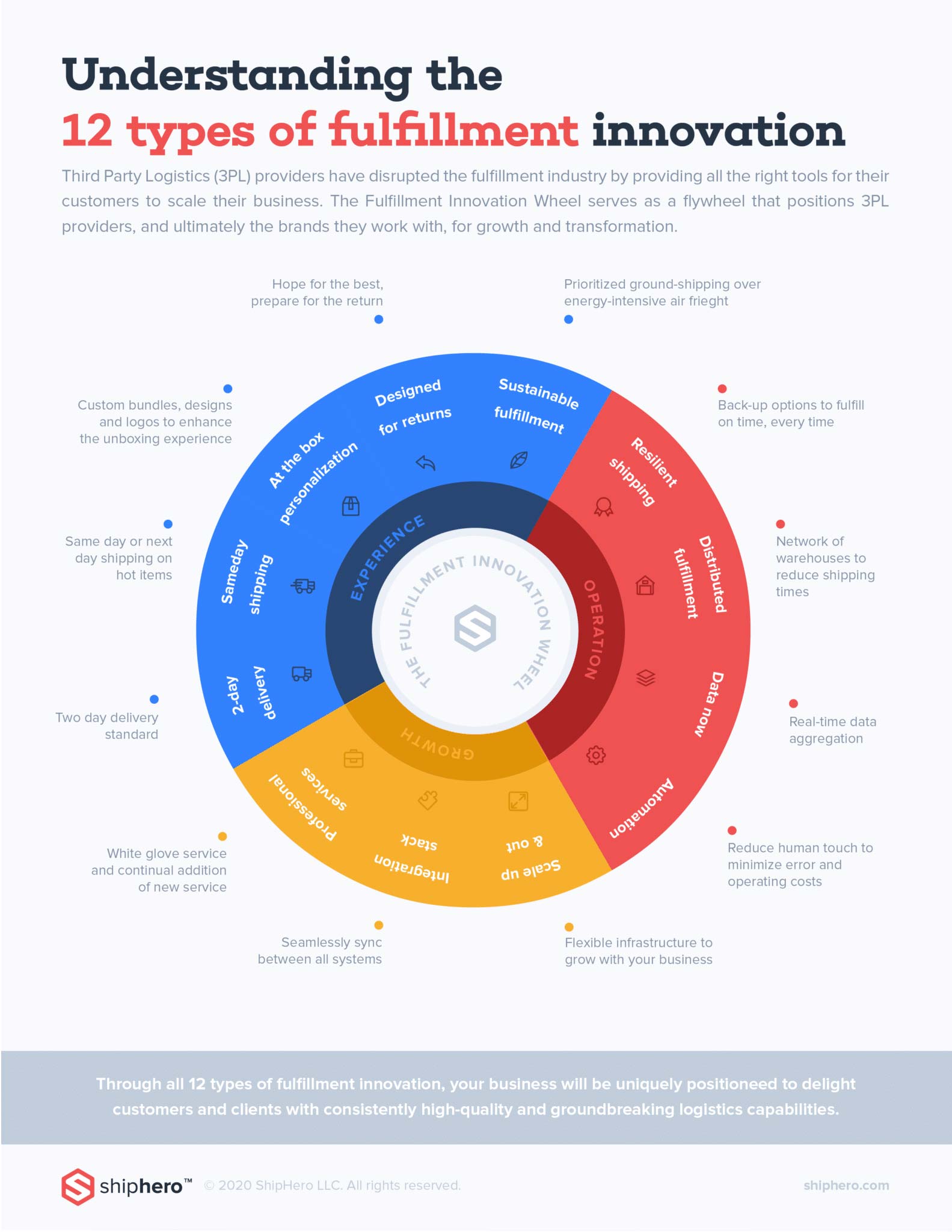
Learn more about ShipHero’s industry-leading warehouse management software.
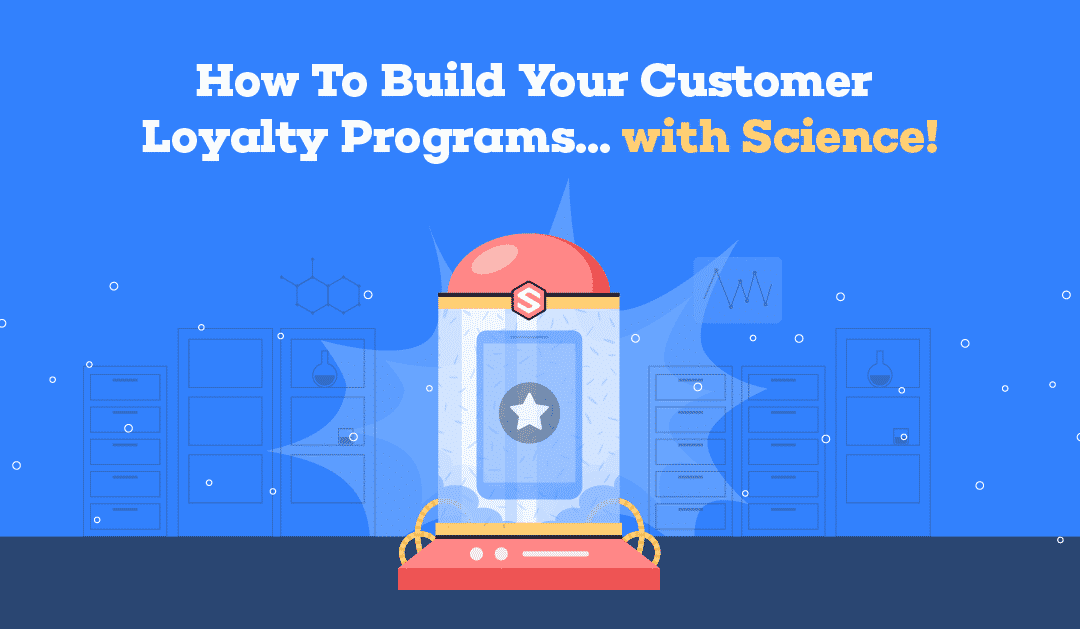
Mar 24, 2021 | Best Practices, Blog
How To Build Your Customer Loyalty Programs… with Science!
An eCommerce Science Lesson
Welcome to your eCommerce Science lesson on Customer Loyalty. Simply put, customer loyalty is that conditioned behavior of “human want thing, company has thing”.
- I want shoes, Nike has shoes.
- I want coffee, Starbucks has coffee.
- I want the meats, Arby’s has the meats.
You get the picture. In fact, a 2021 Customer Experience Trends Report just proved that we’re creatures of habit, with 3 in 4 shoppers making purchasing decisions based on their past experience. So how do you get your company into that equation? With a generous and truly engaging customer loyalty program, of course!
What is a Customer Loyalty Program? It’s a customer-facing program that aims to increase customer retention and motivate repeat purchases… which is a high-falootin’, fancy business school way of saying:
Going the extra mile to really engage with your customers will keep them coming back for more than just your products (like when the waitress calls you “sweetie”.)
In this article, we’ll describe the benefits and best practices for each type of customer loyalty program so that you can start building a customer loyalty program of your very own.
Benefits of Customer Loyalty Program
Customer loyalty programs have been proven to inspire customer retention, drive customer referrals, and save your sales team some budget.
Inspire customer retention. While it’s always nice to see a familiar face, members of customer loyalty programs typically spend nearly 20% more than typical customers. Not to mention, existing customers are 50% more likely to buy a new product of yours.
Drive customer referrals. With loyalty programs that create community or competition, beyond traditional word-of-mouth, people will organically share your loyalty program efforts, contribute positive reviews, and even generate content of their own by way of UGC or ambassadorships.
Save costs: Companies must spend 500% more to convert a new customer compared to an existing one. For example, if you spend $100 flagging down an Average Jane from the street, giving her the business, and closing the sale; you’ll only need to spend $20 to close the sale with them next time.
Building a Customer Loyalty Program
There are six distinct types of customer loyalty programs used by major brands today.
- Points
- Paid Membership
- Tier Rewards
- Progress and Competition
- Community
- Subscription
Let’s dive into a description and best practices for each type. Keep in mind, every type can be used in combination with the other to create hybrid loyalty programs.
Points Program
The points program allows customers to accrue points through various actions, and spend those points on rewards. It is a brilliant way to gamify the shopping experience, and is used by retailers with high volumes and inexpensive items, such as grocery stores, fashion outlets, or fast food chains (hi McDonald’s Monopoly).
You can start by creating a simple points systems, which has two components:
- What actions will customers complete to accrue points? Many retailers equate a $1 spent to 1 point, and increase points if it is a product you need to push.
- How will customers use their points? You can offer discounts, free gifts, samples, and just about anything.
Offer relevant and personal rewards. Beyond product discounts, rewards should be something that truly resonates with your target audience, such as free tickets to a relevant event or cool swag.
Consider using points program software like Smile.io, which allows you to build customized point systems for your online and physical stores.
Paid Membership
The paid membership program invites customers to pay a “joining fee” for members-only club access and VIP benefits, where the perceived benefits of joining the program far outweigh the cost.
You can start by offering exclusive benefits, discounts and product releases to your paid members, and unless you’re already a recognizable brand with strong social proof, this program is best-suited when targeting existing customers.
Be sure to incorporate your business values into the program to build stronger relationships. If your business revolves around certain cause, like Toms for example, you could engage your membership base to feel closer to the contribution
Once your paid membership program is operational, ask your members for feedback and reviews, and widely advertise those perks to convert your non-members into paid members.
Tier Rewards
The tier rewards program offers another way to gamify engagement, and incentivizes customers to ascend tiers that reward with increasingly desirable perks e.g., Silver, Gold, Platinum, Uranium Status on airlines. This provides a satisfying experience, and even a little bragging rights, for your regular customers.
To get started, decide how many tiers you’ll offer based on your available perks. Keep the levels to a minimum or else customers will tire out climbing the seemingly never-ending tiers. Not to mention, customers at your top tier will have the greatest levels of customer retention, so don’t make it too challenging to get there. Aim for a solid distribution of customers at each tier.
Next, you’ll want to decide all the different conditions that a customer can climb tiers, whether it’s dollar amount spent, frequency/volume of orders, or some other form of engagement.
From there, map out available perks based on their value and assign them to each tier. You want to keep it simple and easily understood. Be sure to offer truly valuable and exclusive benefits for the higher tiers.
Progress and Competition
The Progress and Competition loyalty programs publicly issue engagement-related goals or competition, with rewards granted to the top performers. Common examples include Pelaton’s leaderboard, Trivia HQ, Nike Run Club’s public progress tracker, and more
When you publicly set a goal or issue a competition, there will be people that strive to win… it’s just human nature. What’s more, customers who believe they are close to achieving a goal or performing well in a competition become more committed to their efforts — this is known as the endowed progress effect.
To get started, create fun and attainable goals or a challenging game that peaks people’s interest and beckons to their competitive instincts. The goals or game need not focus entirely on buying a product or even engaging in your company at all; rather, the best way to capitalize on this loyalty program is to position your product as the competitive edge you need to reach these goals and win the game.
Be sure to visually encourage progress and comparison with progress bars, leaderboard, and various nudge tactics.
Community
The Community program strives to create a platform where your members can interact with other like-minded individuals to connect and share content, get access to exclusive benefits and events, and stay-in-the-know about your company (causing excruciating FOMO for those not-in-the-know).
To get started, find your target audience by leveraging existing social media platforms to develop a sense of community. Play around with concepts that create bonds not only between your company and customers, but among customers themselves.
Many companies have branded their base by calling them a cute pet-name (hi Barbs), or rallying behind a common cause. In fact, about 66% of customers are more willing to trust brands that take stances on social and political issues that resonate with them.
As long as you encourage discussion that is relevant to your brand, there is no wrong way to create a community-focused loyalty program.
Subscription
The Subscription loyalty program, commonly known as “Subscribe & Save”, allows customers to subscribe to weekly, monthly or seasonal purchases and receive discounts upwards of 15% off. Notable examples are GNC, Trunk Club, Butcher Box, and any brand that ships offers recurring purchases or subscription boxes. (We cover the subscription model extensively in our blog.)
To get started, develop a pricing and bundle strategy that incentivizes customers to sign-up for repeat purchases. Examples include freemium options, early bird offers, free trials, bundles and more. From there, provide an easy way for customers to manage and even customize their subscriptions.
Subscription models have shown to yield better customer relationships, improved aggregate data, and more diversity in product offerings. Not to mention, it gives brands the creative freedom to understand how their customers would prefer to engage with their products and services.
Wrap It Up
By using one or all of the customer loyalty programs above, your company will offer exciting and fun ways to engage with your company, and incentivize repeat customers in the meantime.
While just about any eCommerce company can promise a lucrative subscription model or rewards program, the reality is that these are extremely complicated strategies to pull off without the right inventory management and order fulfillment processes to back them up.
In fact, most 3PLs and fulfillment providers simply don’t offer the customization options that eCommerce companies need to pull off loyalty programs. That’s why you need to make sure you are giving your loyalty to the right fulfillment provider.
That’s why more and more eCommerce companies rely on ShipHero’s advanced bundling and customization capabilities to power their loyalty programs with reliable 2-day shipping across the contiguous U.S.
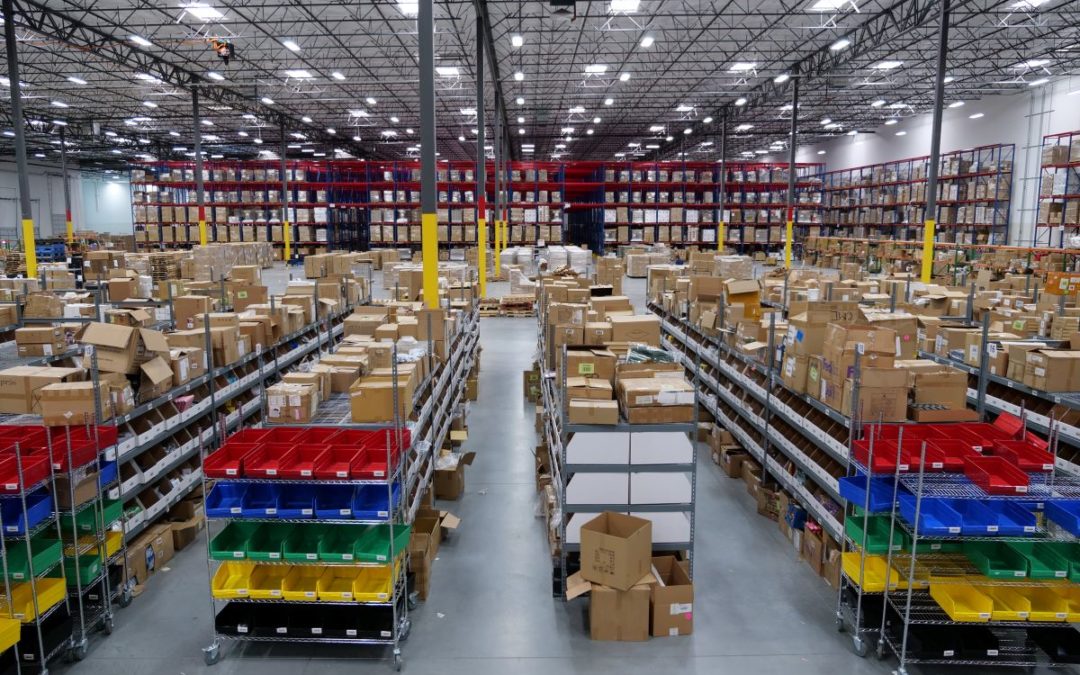
Mar 23, 2021 | 3PL Warehouse Management, Article
Third-party logistics (3PL) is one of the ways that a company can outsource order fulfillment. An eCommerce order fulfillment process starts when a customer submits the order and finishes when the product reaches their door.
What seems like a simple process can become quite complex depending on the storage location of your company’s inventory, the customer’s location, the size of the order and the timetable for delivery. It becomes even more complicated when you factor in the potential for returns.
Suppose you can’t handle your eCommerce fulfillment in-house. In that case, it’s probably time to outsource and let a third-party logistics company take over.
Keep reading to learn everything you need to know about 3PLs.
What Is a Third-Party Logistics Company?
3PL companies are companies that offer various eCommerce logistics processes to online businesses. Some services they offer include warehousing, inventory management and order fulfillment.
3PL involves the business, the logistics provider and the shipping carrier. In simple terms, a 3PL provider offers logistics services to manage certain aspects of a company’s shipping operations. 3PLs are renowned for their logistics industry expertise and can help companies better fulfill orders to keep their customers happy.
Some people think 3PLs and freight brokers are essentially the same. However, 3PL companies are more active than freight brokers because they take over your fulfillment operations. Meanwhile, freight brokers only connect you to shipping carriers without touching your products.
A 3PL becomes integrated into the company’s inventory storage and transportation procedures. Rather than storing, packaging and shipping orders, companies hire a 3PL to manage the entire process. The 3PL owns or leases its storage and transportation assets to fulfill the client’s orders remotely, ensuring you can focus on growing your business.
Third-party supply chain models first appeared in the 1970s when intermodal marketers took packages from businesses and brought them to rail stations for delivery. People developed 3PL software to help companies manage inventory and deliveries as the field grows. Nowadays, all kinds of businesses, from Fortune 500 to small businesses, use third-party logistics.
Benefits of Third-Party Logistics in Supply Chain Management
Here are the benefits of working with a 3PL company:
Reduce Logistics Costs
Third-party logistics companies often have connections in the sector, meaning they have better access to vendors and can negotiate higher discounts for you. By partnering with them, you can use their contacts and influence to reduce shipping supply and warehousing expenses, ultimately saving you money.
Receive Logistics Experience
Many third-party logistics service experts have decades of combined experience in the industry. When you hire a 3PL company, you get access to this expertise to get insights on transport documentation, shipping regulations and other logistics issues. They can also answer your questions about how to increase operational efficiencies.
Focus on Critical Functions
Running an in-house logistics division takes a lot of time and money. By hiring a 3PL company, you can instead focus on core business processes like developing marketing materials and improving sales channels. Better yet, you can do this without dedicating any internal staff or resources to run an in-house logistics division.
Scale With Your Business Capabilities
3PLs provide custom-made services based on your company’s needs and performance. If your business grows and product orders increase, you can sign them for a more significant contract with more benefits. Conversely, considering downscaling your business, you can opt out of some of their services.
Increased Speed
Working with a 3PL company helps you save time. You save time not only by streamlining various supply chain operations but also by being proactively aware of any potential issues in the supply chain. Addressing these issues early on means you don’t need to spend a lot of time fixing them after the damage is done.
Shipping and Logistics System Connectivity
Many 3PL companies offer all-in supply chain and logistics management, which means they handle your entire supply chain. This means your entire supply chain and logistics operation is handled by one party, reducing the chance of miscommunication and mistakes. It’s also more efficient since all the information flows within one organization instead of many.
Improved Customer Service
Customers want to get their purchased items on time. Working with a 3PL company helps you get products to customers on time, increasing their satisfaction. Many 3PL companies also offer returns management, restoring customer satisfaction when they receive defective items.
Third-Party Logistics Business Model
As the name implies, 3PL involves three parties that help bring products to the market. Here are the three parties involved in the 3PL model:
The Business
The business is your company – you’re responsible for producing goods and running the eCommerce business. Once people buy your products, you send the orders to your logistics company.
The Logistics Company
The logistics company is the intermediary between your company and the shipping providers. Third-party logistics companies offer many services, including warehousing, packaging and inventory management.
The Shipper
The shipper carries your products to physical stores or the buyers’ doors. Major shippers include USPS, UPS and DHL.
What Services Does a 3PL Provide?
A 3PL can scale and customize its services according to the client’s specific needs. The client still retains some oversight when managing shipping operations. Before signing a contract, you can outline what services you want the 3PL to provide and what services you will maintain in-house. As your business grows, your 3PL provider can take over a significant role in expanding your supply chain and procurement operations.
Here’s an overview of the services a 3PL typically provides:
Product Storage Solutions
3PL companies provide warehouse spaces to handle order fulfillment for multiple companies in one place. This improves efficiency and reduces costs because they don’t have to switch between numerous warehouse locations to finish orders. Moreover, you don’t have to lease warehouse space, buy forklifts, or rent trucks to handle your merchandise.
Inventory Management and Organization
Managing inventory involves more than simply storing your company’s products. Integrative technology also syncs your inventory with your online store in real-time, so you can track inventory and predict demand to avoid sell-outs. Your 3PL also helps organize items with multiple parts into proper categories, ensuring nothing is misplaced.
Inventory Distribution
Most 3PL providers have fulfillment centers across the country to store your products. 3PL companies distribute your inventory across the country to ensure fast shipment times.
A 3PL automatically routes orders to fulfillment centers based on the customer’s location. 3PLs use extensive automation to save hundreds and thousands of dollars on inventory distribution, raising their clients’ profits.
Picking and Packing
Alongside storage, 3PL companies assign staff to pick products for each order and package them for delivery.
Freight Forwarding
Once the products are picked and packaged, the 3PL forwards them to a shipping carrier for delivery. Different 3PLs work with other carriers, and a good 3PL will choose the one that offers the best price and delivery speed. Some 3PLs even work with local carriers for less than truckload (LTL) shipping for local orders.
Expedited Shipping
By partnering with a 3PL, your company can offer expedited shipping options to your customers since fulfillment centers send out orders daily. 3PLs often negotiate discounts with carriers like FedEx, DHL, USPS and others to offer faster delivery speeds at a manageable cost.
Shipment Tracing/Tracking
In addition to handling the shipping process, a 3PL will also manage the tracing and tracking process. Customers will receive shipping information to track their orders throughout the fulfillment process.
Reverse Logistics (Returns)
Not only do 3PLs offer shipment services, but they can also provide reverse logistics to handle returns. A 3PL can provide customers with return labels to drop the item off with a carrier for return to the fulfillment center.
Again, when you sign a contract with a 3PL company, you can customize its services according to your business’s needs. An experienced 3PL provider will be able to handle the logistics of the entire supply chain from when your customer submits their order to when it arrives on their doorstep.
How 3PLs Handle Order Fulfillment
So you can visualize what this looks like, here is an outline of the order fulfillment process from a 3PL provider’s perspective:
Step 1: Receiving
A 3PL needs inventory to complete customer orders, so your first act should be moving inventory to their warehouse. Depending on your business size, your inventory may be divided into several fulfillment centers. Each 3PL has its process for receiving and storing inventory. Most providers can customize this service according to the client’s needs.
Step 2: Picking
Depending on the 3PL’s software, your partner may get the orders automatically, or you may have to send them manually. After placing the order, the 3PL starts the order fulfillment process by packing the items at the warehouse and then passes it to the next stage of the supply chain for packaging.
Step 3: Packing
Once the 3PL has picked up all ordered items, they are prepared for delivery.
Standard shipping materials for your products include cardboard boxes, poly mailers, bubble wrap, packing tape and bubble mailers. The best 3PL company can balance package protection and small dimensional weight so your products arrive safely and within budget.
Some 3PL companies charge extra for packing material, but others fold the costs into the service fee. Depending on your working relationship, 3PL companies may also let brands customize their packaging.
Step 4: Shipping
After the products are prepared, they’re handed off to a courier for final delivery.
Some 3PLs partner with specific shipping carriers, while other companies have a rotation of transportation services to get the best deals. Either way, 3PL partners are responsible for brokering deals with freight forwarders to bring you the best rates. The courier fleet usually picks items up from your 3PL partner’s warehouses.
Step 5: Returns
The order process doesn’t always finish once the package is delivered to the customer’s door. Specifically, product returns can get complicated if you manage inventory stock levels yourself. When you’re working with a 3PL partner, they receive all returned products to be restocked, scrapped, or processed.
To make the return process more manageable, you can ask the 3PL company to provide shipping labels for every package. Customers can fill them out and return their packages if something goes wrong.
It should be clear by now that 3PL partnerships benefit companies, but how do you determine whether yours will? Keep reading to learn the signs that it’s time to hire a 3PL.
When Do You Need a 3PL?
3PLs are needed when you can’t handle order fulfillment by yourself. Unless you’re running a small retail business out of your garage with no more than a dozen orders a week, the chances are good that your company could benefit from hiring a 3PL provider. To help you decide, here is an overview of the advantages associated with working with a third-party logistics provider:
- Time savings: Outsourcing your company’s logistics means you have more time to focus on critical business processes.
- Cost savings: 3PL companies offer lower warehousing, shipping and inventory management prices, which is cheaper than building in-house logistics departments.
- Improved compliance: 3PL companies help you stay updated with the latest logistics technologies and regulations. Service customization: When it comes to warehousing, shipping and distribution, a 3PL provider can customize its services according to your needs and adjust as you grow. Access to resources: Hiring a 3PL gives you access to the best inventory management software and other integrative technology you might not get on your own.
- Expanded reach: 3PL companies have more experience negotiating with shipping carriers and other vendors so that you can get the best logistics services at low rates.
- Risk reduction: Outsourcing operational logistics to a 3PL company means fewer labor and financial risks than building an in-house logistics department.
Still unsure whether hiring a 3PL provider is the next logical step for your business? Here are some of the top reasons to hire a third-party logistics provider:
You’re Shipping More Than 100 Orders Per Month
There is nothing magical about the number “100” – the point is that your company is receiving more orders than you can efficiently manage in-house. Shipping a large volume of items per month means your team spends more time and effort fulfilling orders than doing core business tasks. Once you’ve reached over 100 shipments per month, it’s a good idea to hire a 3PL company to support your operations.
You’ve Run Out of Storage Space for Your Inventory
Any retail company’s goal is to have enough orders that it becomes necessary to increase inventory levels. Of course, when this happens, you’ll need space to store all of that extra inventory. Rather than dealing with this predicament each time you add a new product to your store, turn over storage logistics to a 3PL.
You Want to Offer Your Customers Expedited Shipping
Suppose you’re currently managing your order fulfillment in-house. In that case, you may struggle to make it to the post office even once a day, let alone often enough to give your customers expedited shipping options. With a 3PL handling your order fulfillment logistics, you can suddenly offer one-day, two-day and maybe even same-day delivery.
You Want to Save Money on Storage and Shipping
Working with 3PL providers isn’t cheap, but it could save you loads of time and money. Instead of spending a lot to lease storage space and build an in-house logistics division, consider hiring a 3PL so you can spend the savings on building your business. Additionally, 3PL services speed up product deliveries and give you a competitive advantage.
You Want Your Company to Have Room to Grow
Every good business person is forward-thinking. From the moment you start your business, you should know where you want to go and how you want to get there. Suppose you expand your offerings throughout the country or around the globe. In that case, a 3PL can help you get there with inventory distribution services. For example, some 3PLs can leverage 2-day or overnight shipping to help eCommerce businesses keep up with Amazon and other giants.
Hiring a 3PL provider to manage your supply chain’s logistics is smart if any or all of the signs above are coming into play. Before you start shopping around for a 3PL, however, you should take a moment to consider whether doing so is enough. You may want to consider taking things one step further and hiring fourth-party logistics service providers – keep reading to learn more.
What’s the Difference Between a 3PL and a 4PL?
First and foremost, you should know that 3PLs and 4PLs are professional, hired services that help businesses like yours plan and execute inventory management and order fulfillment logistics. You get much more flexibility than you would if you managed fulfillment in-house.
As you well know by now, a third-party logistics provider is a company that handles the logistics of your company’s supply chain and order fulfillment processes. Depending on how much control you want to hand over to your 3PL, they can do everything from storing and managing your inventory to picking, packing and shipping your orders. They can even handle the returns management process for you.
So, what is a fourth-party logistics provider, and how does it differ from a 3PL?
A fourth-party logistics provider adds another element to the equation, combining various resources and technologies to optimize your supply chain’s design and execution. You can still keep your 3PL to manage the day-to-day details of order fulfillment. Still, a 4PL will become the “control tower” that oversees supply chain management. They will supervise your 3PLs and any other resources or providers you use to ensure your supply chain operates smoothly, efficiently and cost-effectively. For businesses that want total supply chain visibility, a 4PL provider can be a great option.
The critical difference between a 4PL and a 3PL is that many 3PLs are asset-based – they own or lease equipment and warehouses that they use to provide services. As such, a 3PL is concerned with its costs and may not always seek the best deal for you if it means a better deal for them. In contrast, a 4PL’s only concern is integrating and optimizing your supply chain operations.
The Different Types of 3PL Providers
A third-party logistics provider can offer many services, though many focus on specific supply chain solutions. As a business, this might mean hiring multiple 3PLs to fulfill your supply chain’s different aspects – this is when hiring a 4PL may come in handy.
Here is a quick overview of the different types of 3PL providers you may come across:
Transportation
As part of your transportation 3PL search, you need to consider several factors, including the company’s location, where your customers are located, delivery timelines, shipping methods, service options and pricing and discounts. This type of 3PL deals with shipping inventory between locations.
Warehousing/Distribution
The most common type of 3PL is warehouse and distribution-based. These providers handle the storage, shipment and returns of your orders. When considering a warehousing 3PL, you’ll need to consider the number of locations and their geographical locations, the pricing model for storage, negotiated shipping rates, delivery insurance, daily cutoffs for order fulfillment and management tools.
Financial/Information
Once your company expands beyond the eight or nine-figure mark in annual revenue, you may want to bring a financial 3PL on board to help you optimize your operations for the industry and to evaluate current trends. These 3PLs offer freight auditing, cost accounting, bookkeeping, tracking, tracing and inventory management.
How 3PL Pricing Models Work
Now that you better understand the different types of 3PL providers, you may wonder how much it costs to hire a 3PL. Third-party logistics pricing depends on the services you require and the scope. Several factors that determine 3PL pricing include:
- Onboarding: Getting a 3PL partnership up and running can take 3 to 6 months, so some companies charge onboarding fees to set your company up with integrated technology to manage order fulfillment services.
- Inventory Receiving: Before a 3PL can start managing its supply chain, it must receive its inventory from suppliers or manufacturers. Some companies charge per unit or pallet, while others charge by the hour or a flat rate for receiving and storing inventory.
- Inventory Storage: Different 3PLs offer different storage fees depending on the warehouse. You may be charged a lower rate for shared storage but will share the fulfillment center with other companies. You may be charged per item, bin, shelf, or pallet for storage.
- Order Picking and Packing: Many 3PLs charge a fee for picking each item, while others include this cost in the total order fulfillment price. Some companies offer discounted rates for orders under a certain number of items.
- Packaging: Some 3PLs include packaging materials in their shipping costs, while others charge a fee. You may have the option to customize your packaging materials, or you may not.
- Kitting: Refers to any unique accommodations you request for assembling, arranging, or packing orders before shipping. Assembly fees vary according to your individual needs.
- Shipping: Most 3PLs have relationships with shipping carriers to reduce costs, which means more significant savings. These costs consider various factors, such as shipping speed, shipping zones and packages’ dimensional weight.
In addition to considering these individual costs, you should also know that most 3PLs offer three pricing models. Here is a quick overview of their differences:
- Total Fulfillment Cost: This pricing model reflects the total fulfillment cost for direct-to-consumer orders, charging only for receiving, storing and shipping inventory instead of fees for individual services.
- Fulfillment by Amazon: Abbreviated to FBA, Fulfillment by Amazon is a model in which products are sold on the Amazon marketplace, and Amazon fulfills orders on behalf of your company. Because Amazon receives a cut of every sale, they can offer discounted fulfillment fees. This offer is convenient for some companies, but for others, it means sacrificing a portion of their bottom line and losing the ability to highlight their brand. Amazon also charges long-term storage fees for unsold items.
- Pick and Pack: As you can guess from the name, this pricing model is based on separate charges for each item picked and packaged. Most 3PL providers charge between $0.15 and $5.00 for each pick, so costs can add up quickly with this pricing model.
When choosing a 3PL provider, consider all aspects, including costs. Keep reading to receive some additional tips for selecting a 3PL provider.
Tips for Choosing a 3PL Provider
If you’ve decided that hiring a third-party logistics provider is the next logical step in expanding your business, congratulations! Now comes the hard work – choosing the perfect provider to meet your business’s current needs while offering room for growth.
Here are some simple tips to keep in mind when choosing a 3PL provider:
- Ask the provider if they have an enforceable non-disclosure agreement (NDA).
- Look at the company’s financial stability and client satisfaction track record.
- Book a consultation to visit a nearby 3PL warehouse or distribution center to see if their operations are up to code.
- Consider the company’s hours of operation, including weekends and holiday hours.
- Ask what services the company provides and which, if any, they consider their specialty.
- Determine what third-party logistics software they use and examine its features.
- Ask how the company differs from other 3PLs and what differentiates them from the competition.
- Consider the options for customization and scalability of services.
- Inquire about their relationships with shipping carriers and their negotiated rates.
- Ask about their options for expedited shipping as well as guaranteed deliveries.
- Determine how many warehouses they operate and their locations.
- Ask about their customer service policies and how they help you when an issue occurs.
- Ask what the costs and process is. If you’re not happy, choose to switch to another 3PL.
- Find out what their typical customer profile is. If their profile is disjointed or you’re not similar to their other customers, they might not be the right 3PL.
- Try to find reviews and talk to existing or past customers.
Mistakes to Avoid When Choosing a 3PL Provider
Naturally, you want to find the best 3PL provider for your company. That’s probably easier said than done, though. There are many pitfalls to avoid when choosing a 3PL company to work with.
Here, we’ll cover six mistakes you should be wary of when picking a 3PL company.
Choosing Companies With the Lowest Upfront Costs
One of the goals of outsourcing fulfillment is saving money, but that doesn’t mean you should cheap out on a 3PL company. You shouldn’t choose a 3PL company just by choosing the one with the lowest upfront costs because it may cost you more in the long run.
Many 3PL companies can offer low upfront costs because they don’t use the latest technologies or provide less client support. If your chosen 3PL company isn’t doing its best to satisfy your logistics needs, your customer satisfaction may also suffer. Consider spending more upfront to gain long-term benefits instead of short-term savings.
Not Asking Questions
Just like any partnership, you need to be clear about what you expect out of your 3PL partner. Here’s what you should do before signing a deal:
- Ensure you know how the 3PL company runs its business.
- Ask the representative questions about how the company handles big order volumes, scales for seasonal demand, receive customer returns and more.
- Don’t move forward with the deal before you know everything you need to know about the 3PL provider.
Choosing 3PL Companies Closest to Your Location
Choosing a 3PL company with fulfillment centers close to you means you’ll have an easier time surveying your inventory and checking out its operations. But it’s even more important that your 3PL’s fulfillment centers be close to your customer base to reduce shipping time and costs.
Not Communicating Product Demand Changes
3PL companies don’t understand your business unless you tell them, so you need to inform them of any changes in seasonal demand. They may have difficulty managing inventory if you don’t communicate when your products are most or least in demand. Remember to give your 3PL partner advanced notice of demand spikes to ensure they have enough inventory on hand to meet customer demands.
Not Providing Relevant Information
Communication is key when working with a 3PL partner, and sharing information relevant to your logistics operation is part of it. You need to trust your 3PL partner with essential information about your logistics operations, so they won’t be in the dark and can provide the best services.
Picking 3PLs With Bad Client Service
Your interview with a prospective 3PL partner generally informs how they run their business. If the representative exhibits a customer-first attitude and goes out of the way to accommodate your needs, that can be a good sign of how they’ll treat your customers. Conversely, if the representative treats you badly, the company may do the same to your customers.
Examples of 3PL Companies for eCommerce and Small Businesses
There are dozens of 3PL companies vying for your business, so choosing one is challenging. To help you decide, here are four premiere 3PL company options for your eCommerce and small business:
ShipHero
ShipHero is one of the best third-party logistics services for online retailers providing order fulfillment for more than 4,000 eCommerce businesses. Here are some of the benefits you’ll get when partnering up with ShipHero:
- Warehouse management services
- Robust 3PL software system
- Nationwide fulfillment center network
- Professional returns management
- eCommerce platform integration
- A variety of delivery options
- Simple pricing model and flat fees
- No-contract services
ShipHero also integrates with major eCommerce platforms like Shopify Plus, BigCommerce, Shopify, Amazon and WooCommerce.
ShipBob
ShipBob is a third-party logistics company that helps you ship products worldwide. It promises shipping to all areas of the world through fulfillment centers in North America, Australia and Europe.
ShipBob offers these 3PL services:
- Warehouse storage
- Pick and pack
- Product receiving
- Standard product packaging
- Product shipping
ShipBob offers integrations with major eCommerce platforms like Shopify, BigCommerce and Squarespace.
Whitebox
Whitebox offers end-to-end 3PL services to help your products go from the factory floor to the buyers’ doorstep. Whitebox even has an in-house advertising agency to help you market your business.
The services offered by Whitebox include:
- Product packaging
- Shipping
- Quality assurance
- Warehouse management
- Order fulfillment
- Product description creation
- Professional product photography
FedEx Fulfillment
FedEx Fulfillment is the 3PL subsidiary of FedEx, which offers third-party logistics to small businesses. It boasts excellent customer service and a resource hub to help new business owners learn entrepreneurship.
Here are the services you’ll get from FedEx Fulfillment:
- Order fulfillment
- Product packaging
- Reverse logistics
- Warehouse and storage management
How to Choose the Best Third-Party Logistics Company
Choosing the right 3PL company can help you cut costs and improve efficiency. Follow these tips to pick the right 3PL provider:
- Research the company’s reputation and track record.
- Find a company that offers all the services you need.
- Look into the 3PL company’s technology.
- Ask about their inventory and packaging customization offerings.
- Pick a company that provides multiple fulfillment centers across your target regions.
Closing Thoughts
Once you’ve narrowed your list to a few different 3PL options, it’s time to start digging deeper to find the best match for your company. Before talking to any 3PL in-depth, ensure they have and sign a non-disclosure agreement to protect your company.
In addition to talking to the 3PL’s representatives, you should also ask for references in the industry to determine whether the company has a solid track record and a positive reputation. Over time, it will become clear whether any of the 3PLs on your list are the right fit for your company or not.
Of course, the most important matter when choosing a 3PL partner is the value it offers. Find a 3PL company that caters to your order fulfillment needs at a reasonable price.
Finding the perfect third-party logistics partner that will keep your company’s best interests in mind may not be a quick and easy process. Still, it is important that you do it right.
For help finding a 3PL provider, check out our online directory or contact ShipHero directly to learn how we can help you with fulfillment.

Third-Party Logistics FAQs
How Is a 3PL Different From a Fulfillment Company?
A 3PL is different from a fulfillment company in the services it offers. Most fulfillment companies only pack and ship your packages. Meanwhile, a 3PL company takes over your entire logistics operations, from warehousing to shipping. Many 3PLs even offer extra services like returns processing and inventory management.
3PL Companies for Small Businesses vs Large Businesses
3PL companies can help small businesses and large businesses alike. The scale of service is the major difference between 3PL for small and large businesses.
For small businesses, a 3PL company may only need to handle a relatively small amount of items with limited variety. Conversely, 3PLs working with large businesses may handle a wide range of products at larger volumes.
That said, the end result is still the same. Partnering with a 3PL increases your logistics efficiency to save money and get products to customers quicker.
What are third-party logistics (3PLs)?
Third-party logistics involves handing your logistics operations over to another company. A third-party logistics company usually offers warehousing, shipping and inventory management services.
What’s the difference between 3PL vs. 4PL?
The main difference between 3PL and 4PL is the number of parties involved. A 3PL company still works under your management to handle your inventory and shipments. In contrast, a 4PL company contracts different 3PL providers to take your products.
What are the benefits of working with a 3PL?
The main benefits of working with 3PLs are cost and time savings. You also gain access to their expertise. You don’t have to train in-house logistics employees to handle warehousing and shipping.


